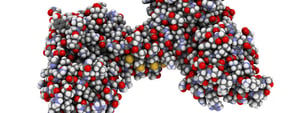Physiologists from the Perelman School of Medicine in Pennsylvania (United States) are offering new hope for the treatment of Duchenne muscular dystrophy (the most widely-studied childhood muscular dystrophy illness). As reported in the journal Scientific Reports (Nature group), the researchers have tried a new approach in order to get around the (biological) obstacles that continue to make it so difficult to search for effective treatments against this disease, which is responsible for the progressive destruction of muscle cells.
What is this new hope? Before going into the details, we need to take a quick look at how Duchenne muscular dystrophy develops. An altered gene (the largest, in size, of the known genes of our DNA) is responsible for the illness, which “cancels” the production of dystrophin, a fundamental protein for muscle function. The absence of dystrophin leads to a true and proper explosion of muscle cells, with a discharge of cell content, which is attacked as if it were an “enemy” of the immune system, exacerbating the situation. Up to now all attempts to repair, or replace, the altered gene have not worked, due to the considerable size of the aforesaid gene and also because the dystrophin produced through gene therapy, being unknown to the immune system, then triggers an auto-immune reaction. Even the drug therapies currently available have not managed to effectively keep the damage under control, and children with DMD present a delay in motor development from an early age, which tends to worsen with the passing of time, also resulting in very serious consequences.
The physiologists from the University of Pennsylvania have tried to get around this obstacle, by concentrating all their efforts on another protein, utrophin, usually found in small quantities in the body, which has similar genetic characteristics and functions to dystrophin and does not cause immune reactions (because the body’s defence system already recognizes it). Other researchers, in the past, had tried to increase the concentration of utrophin in the blood, by activating the gene that regulates its production with special drugs, but for various and complex reasons these attempts were unsuccessful. The physiologists from the University of Pennsylvania, however, chose a somewhat opposite approach: that of “silencing” the utrophin gene, through a series of molecules selected using special algorithms. And so, even though it may seem like a paradox, the slowing down of that gene has led – through a complicated series of reactions and counter-reactions, defined as “upregulation” – to an increase in the production of utrophin, capable of compensating, at least in part, for the lack of dystrophin. To date tests have only been conducted on laboratory animals. New studies will be needed, but the researchers are quietly confident.

